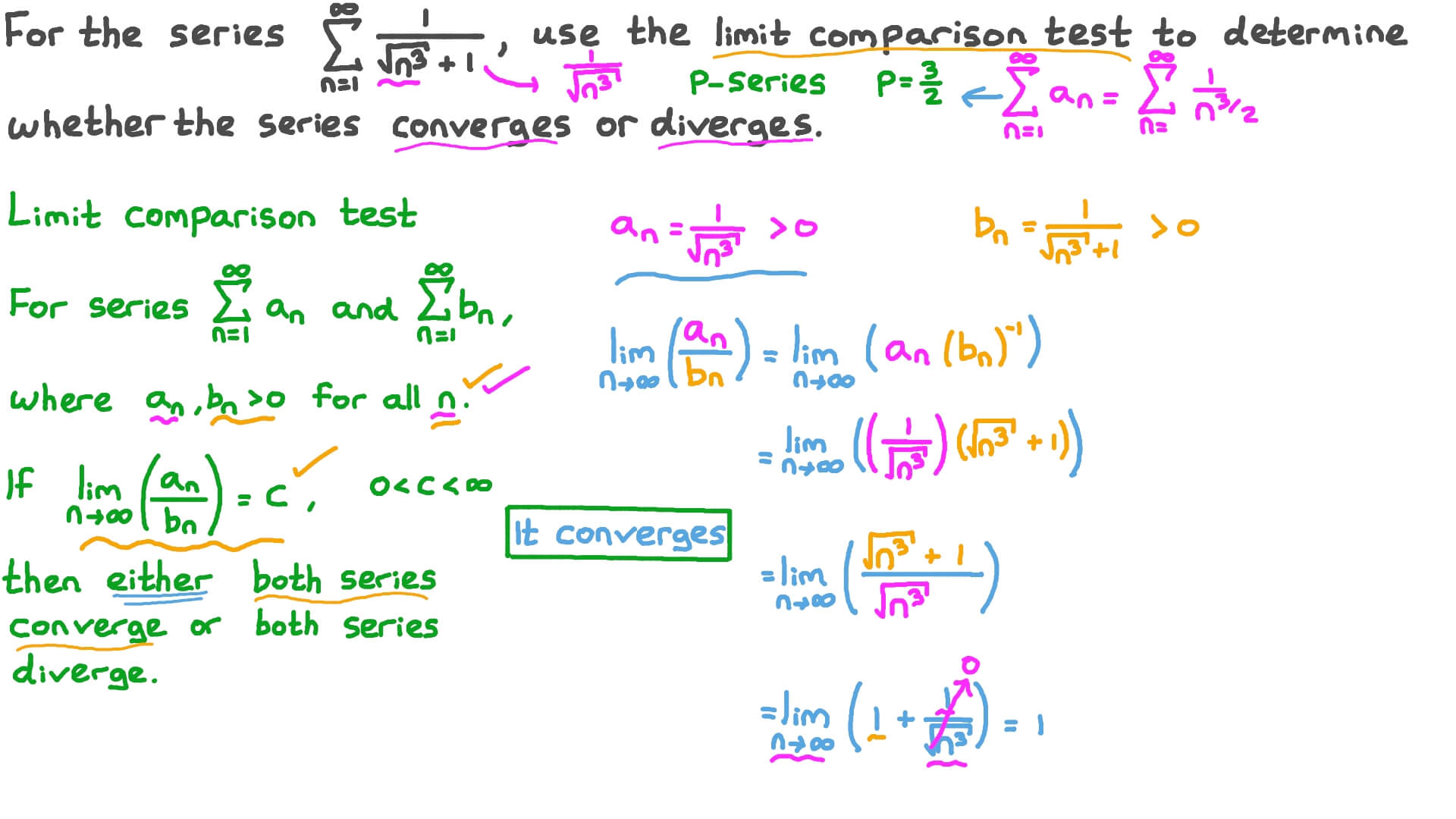What Is Limit Comparison Test? Simplified Rules

The Limit Comparison Test is a powerful tool in calculus used to determine the convergence or divergence of an infinite series. It’s particularly useful when dealing with series that are not straightforward to analyze using other convergence tests. The test is based on the idea of comparing the given series with a simpler series whose convergence properties are known. Here’s a simplified breakdown of the rules and how to apply them:
Basic Principle
The Limit Comparison Test states that if we have two series, \sum a_n and \sum b_n, with positive terms, and the limit of the ratio \frac{a_n}{b_n} as n approaches infinity is a finite, positive number, then either both series converge or both diverge.
Mathematical Formulation
Given two series \sum a_n and \sum b_n with a_n > 0 and b_n > 0 for all n, if:
[ \lim_{n \to \infty} \frac{a_n}{b_n} = L ]
where L is a finite, positive number (L > 0), then:
- If L is a finite, positive number, then \sum a_n and \sum b_n either both converge or both diverge.
- If L = 0 and \sum b_n converges, then \sum a_n converges.
- If L = \infty and \sum b_n diverges, then \sum a_n diverges.
Simplified Rules for Application
Choose a Comparison Series: Select a series \sum b_n that you know is convergent or divergent and has a similar form to \sum a_n. The series \sum b_n should be simple enough that its convergence properties are known (e.g., \sum \frac{1}{n^2} for convergence, \sum \frac{1}{n} for divergence).
Calculate the Limit: Find the limit of \frac{a_n}{b_n} as n approaches infinity. This limit, L, will tell you how the terms of the two series compare in size as n gets very large.
Interpret the Limit:
- If L is a positive finite number, then both series behave the same way: either they both converge or they both diverge.
- If L = 0 and you know \sum b_n converges, then \sum a_n also converges. This suggests that the terms of \sum a_n are sufficiently smaller than those of the convergent \sum b_n.
- If L = \infty and you know \sum b_n diverges, then \sum a_n also diverges. This means the terms of \sum a_n grow significantly faster than those of the divergent \sum b_n.
Example Application
Consider determining the convergence of the series \sum \frac{n^2 + 1}{n^3 + n}.
Choose a Comparison Series: The series \sum \frac{1}{n} (the harmonic series) is divergent and has a similar highest order term in the denominator.
Calculate the Limit: [ \lim{n \to \infty} \frac{(n^2 + 1)/(n^3 + n)}{1/n} = \lim{n \to \infty} \frac{n^3 + n}{n^3 + n^2} \cdot \frac{n^2 + 1}{n} ] Simplifying gives: [ \lim{n \to \infty} \frac{n^2 + 1}{n^2 + n} = \lim{n \to \infty} \frac{1 + 1/n^2}{1 + 1/n} = \frac{1}{1} = 1 ]
Interpret the Limit: Since the limit is 1, a finite positive number, and we know \sum \frac{1}{n} diverges, \sum \frac{n^2 + 1}{n^3 + n} also diverges.
Conclusion
The Limit Comparison Test provides a straightforward method for determining the convergence of series by comparing them to known series. By applying the simplified rules outlined above, you can use this test to analyze a wide range of series and deepen your understanding of their behavior. Remember, the key to successfully applying the Limit Comparison Test lies in selecting an appropriate comparison series and correctly interpreting the limit of the ratio of the series’ terms.
